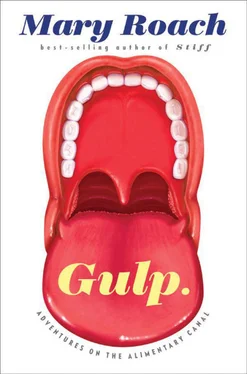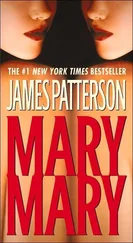AT HALF PAST ten, the sky was princess pink. There was still enough light to make out the walrus appliqués on the jacket of a young girl riding her bicycle on the gravel road through town. We were joined in the kitchen by a man named Marcel, just back from a hunting camp where a pod of narwhal had been spotted earlier in the day. The narwhal is a medium-sized whale with a single tusk protruding from its head like a birthday candle.
Marcel dropped a white plastic bag onto the table. It bounced slightly on landing. “Muktuk,” Nirlungayuk said approvingly. It was a piece of narwhal skin, uncooked. Nartok waved it off. “I ate muktuk earlier. Whole lot.” In the air he outlined a square the size of a hardback book.
Nirlungayuk speared a chunk on the tip of a pocketknife blade and held it out for me. My instinct was to refuse it. I’m a product of my upbringing. I grew up in New Hampshire in the 1960s, when meat meant muscle. Breast and thigh, burgers and chops. Organs were something you donated. Kidney was a shape for coffee tables. It did not occur to my people to fix innards for supper, especially raw ones. Raw outards seemed even more unthinkable.
I pulled the rubbery chunk from Nirlungayuk’s knife. It was cold from the air outside and disconcertingly narwhal-colored. The taste of muktuk is hard to pin down. Mushrooms? Walnut? There was plenty of time to think about it, as it takes approximately as long to chew narwhal as it does to hunt them. I know you won’t believe me, because I didn’t believe Nartok, but muktuk is exquisite (and, again, healthy: as much vitamin A as in a carrot, plus a respectable amount of vitamin C).
I like chicken skin and pork rinds. Why the hesitation over muktuk? Because to a far greater extent than most of us realize, culture writes the menu. And culture doesn’t take kindly to substitutions.
WHAT GABRIEL NIRLUNGAYUK was trying to do with organs for health, the United States government tried to do for war. During World War II, the U.S. military was shipping so much meat overseas to feed troops and allies that a domestic shortage loomed. According to a 1943 Breeder’s Gazette article, the American soldier consumed close to a pound of meat a day. Beginning that year, meat on the homefront was rationed—but only the mainstream cuts. You could have all the organ meats you wanted. The army didn’t use them because they spoiled more quickly and because, as Life put it, “the men don’t like them.”
Civilians didn’t like them any better. Hoping to change this, the National Research Council (NRC) hired a team of anthropologists, led by the venerable Margaret Mead, to study American food habits. How do people decide what’s good to eat, and how do you go about changing their minds? Studies were undertaken, recommendations drafted, reports published—including Mead’s 1943 opus “The Problem of Changing Food Habits: Report of the Committee on Food Habits,” and if ever a case were to be made for word-rationing, there it was.
The first order of business was to come up with a euphemism. People were unlikely to warm to a dinner of “offal” or “glandular meats,” as organs were called in the industry. [19] Among themselves, meat professionals speak a jolly slang. “Plucks” are thoracic viscera: heart, lungs, trachea. Spleens are “melts,” rumens are “paunch,” and unborn calves are “slunks.” I once saw a cardboard box outside a New York meat district warehouse with a crude sign taped to it: FLAPS AND TRIANGLES.
“Tidbits” turned up here and there—as in Life’ s poetic “Plentiful are these meats called ‘tidbits’”—but “variety meats” was the standout winner. It had a satisfactorily vague and cheery air, calling to mind both protein and primetime programming with dance numbers and spangly getups. In the same vein—ew! Sorry. Similarly, meal planners and chefs were encouraged “to give special attention to the naming” of new organ-meat entrées. A little French was thought to help things go down easier. A 1944 Hotel Management article included recipes for “Brains à la King” and “Beef Tongue Piquant.”
Another strategy was to target kids. “The human infant enters the world without information about what is edible and what is not,” wrote psychologist Paul Rozin, who studied disgust for many years at the University of Pennsylvania. Until kids are around two, you can get them to try pretty much anything, and Rozin did. In one memorable study, he tallied the percentage of children aged sixteen to twenty-nine months who ate or tasted the following items presented to them on a plate: fish eggs (60 percent), dish soap (79 percent), cookies topped with ketchup (94 percent), a dead (sterilized) grasshopper (30 percent), and artfully coiled peanut butter scented with Limburger cheese and presented as “dog-doo” (55 percent). The lowest-ranked item, at 15 percent acceptance, was a human hair. [20] The children were wise to be wary. Compulsive hair-eaters wind up with trichobezoars—human hairballs. The biggest ones extend from stomach into intestine and look like otters or big hairy turds and require removal by stunned surgeons who run for their cameras and publish the pictures in medical journal articles about “Rapunzel syndrome.” Bonus points for reading this footnote on April 27, National Hairball Awareness Day.
By the time children are ten years old, generally speaking, they’ve learned to eat like the people around them. Once food prejudices are set, it is no simple task to dissolve them. In a separate study, Rozin presented sixty-eight American college students with a grasshopper snack, this time a commercially prepared honey-covered variety sold in Japan. Only 12 percent were willing to try one.
So the NRC tried to get elementary schools involved. Home economists were urged to approach teachers and lunch planners. “Let’s do more than say ‘How do you do’ to variety meats; let’s make friends with them!” chirps Jessie Alice Cline in the February 1943 Practical Home Economics. The War Food Administration pulled together a Food Conservation Education brochure with suggested variety-meat essay themes (“My Adventures in Eating New Foods”). Perhaps sensing the futility of trying to get ten-year-olds to embrace brains and hearts, the administration focused mainly on not wasting food. One suggested student activity took the form of “a public display of wasted edible food actually found in the garbage dump,” which does more than say “How do you do” to a long night of parental phone calls.
The other problem with classroom-based efforts to change eating habits was that children don’t decide what’s for dinner. Mead and her team soon realized they had to get to the person they called the “gatekeeper”—Mom. Nirlungayuk reached a similar conclusion. I tracked him down, seventeen years later, and asked him what the outcome of his country-foods campaign had been. “It didn’t really work,” he said, from his office in the Nunavut department of wildlife and environment. “Kids eat what parents make for them. That’s one thing I didn’t do is go to the parents.”
Even that can flop. Mead’s colleague Kurt Lewin, as part of the NRC research, gave a series of lectures to homemakers on the nutritional benefits of organ meats, ending with a plea for patriotic cooperation. [21] Meat and patriotism do not fit naturally together, and sloganeering proved a challenge. The motto “Food Fights for Freedom” would seem to inspire cafeteria mayhem more than personal sacrifice.
Based on follow-up interviews, just 10 percent of the women who’d attended had gone home and prepared a new organ meat for the family. Discussion groups were more effective than lectures, but guilt worked best of all. “They said to the women, ‘A lot of people are making a lot of sacrifices in this war,’” says Brian Wansink, author of “Changing Eating Habits on the Home Front.” “‘You can do your part by trying organ meats.’ All of a sudden, it was like, ‘Well, I don’t want to be the only person not doing my part.’”
Читать дальше












